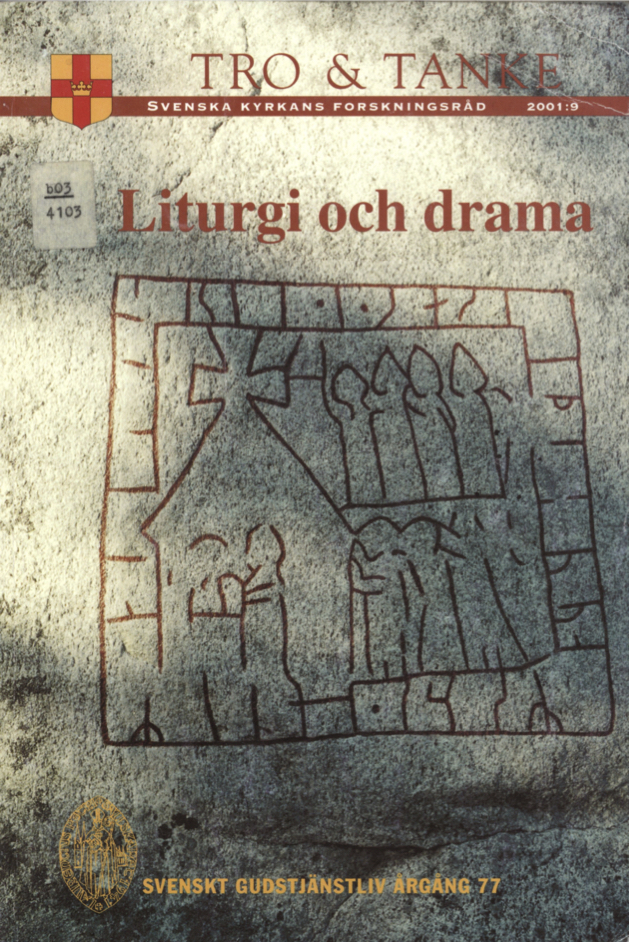Lunds Stifts Kyrkospel
Abstract
The Liturgical Drama Activity of the Diocese of Lund (Lunds Stifts Kyrkospel) had two sources of inspiration. One source was the observations I at the middle of the 50's made with a group of players touring the churches of the diocese of Lund with relatively simple plays. The other source were the more profound experiences and reflections that had been made in Sigtuna (a town in central Sweden) from the very much larger plays produced there.
Olov Hartman in Sigtuna had written a historical play, which for practical reasons was played in the outdoor church of the Sigtuna Foundation (Sigtunastiftelsen) and because of that had some clearly liturgical accents. Tuve Nyström directed productions which in their tightness consciously avoided creating their own theatrical stuffiness. Thus, the play in the church got— at first unintentionally— a liturgical dimension, which made the audience suddenly not know whether they attended a service with theatre or a theatre performance with a service. This state of uncertainty was considered stimulating, waiting for new experiments.
As far as they by and by connected with medieval plays, this only concerned the liturgical plays long before the mystery plays.
Actress Birgitta Hellerstedt took part in the production of “The Crown of Life” (Livets krona) which was a Hartman and Nyström attempt to create conscious, liturgical theatre. When, at a conference for church drama groups outside Paris, 1960, she realised that the Swedish group was the only one to perform a totally liturgical drama, she was inspired to set up her own drama enterprise in the diocese of Lund. The diocesan leadership was positive and employed her as church drama consultant of the diocese. Together, she and I laid down dramatic and liturgical outlines for—what we called— the Liturgical Drama Activity of the Diocese of Lund.
The Lund cathedral was the centre, where we had daily performances during a couple of summer weeks, where we arranged courses and conferences, where we had drama days with workshops, and so on. Quite a number of people were thus drawn into our activities.
The leading principle of the liturgical plays was the fact that we wanted to consciously play well together with the church room as church room and blend well with the usual liturgical style. The players’ costumes were the normal liturgical garments, they went into and out of processions, and it was accentuated that the play was to he seen as (part of) a service.
Among other things, this meant that the prayers in the plays were not a dramatic feature in a theatrical illusion, hut a liturgical prayer with liturgy’s character of reality. Here, as at all other services, the altar was a reminder of Christ’s presence, so it was, e.g., unimaginable for a player to be playing the part of Christ.
The liturgical play did not come into existence as a product of the drawing hoard, hut was the fruit of spontaneous and reflecting practical solutions by people who were dramatically interested and familiar with and living in the liturgy of the church. The tension between established liturgical forms and new artistic solutions was thus seen as a fruitful relationship with a tradition that was being renewed.
Downloads
Publicerad
Nummer
Sektion
Licens
© författarna, Laurentius Petri Sällskapet för svenskt gudstjänstliv samt Artos & Norma bokförlag. Det är tillåtet att kopiera och använda material ur Svenskt Gudstjänstliv för forskningsändamål om källan anges. För övriga ändamål kontakta respektive artikelförfattare samt förlaget. Särskilda restriktioner kan gälla för bildmaterial.


